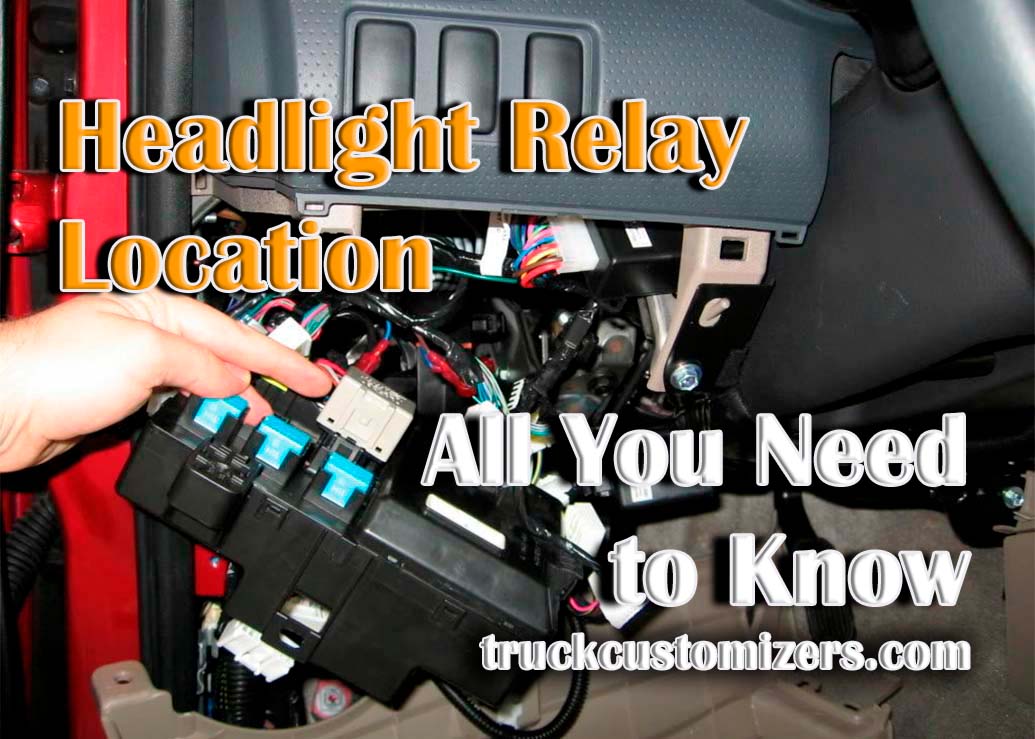Did you know that a faulty headlight relay can account for up to 80% of headlight issues in cars? Understanding the basics of headlight relay problems is crucial for troubleshooting dim or non-functional headlights. When your car’s headlights start acting up, it’s often the headlight relay causing the problem. Whether it’s flickering lights or complete failure, knowing where the headlight relay is located and how to diagnose potential issues can save you time and money on unnecessary repairs. Let’s dive into this essential component of your vehicle and unravel the mysteries behind its operation.
What Does a Headlight Relay Do?
A headlight relay plays a vital role in operating a vehicle’s lighting system. Essentially, it serves as a mechanism regulating the electricity flow to the headlights. When the headlight switch is activated, it sends an electrical signal to the relay. This signal triggers the relay, enabling the direct flow of electrical current from the battery to the headlights. By doing so, the relay ensures that the headlights receive stable and enough power to function at the desired intensity. It is critical to note that headlights consume a large amount of electricity.
Without the relay, the headlight switch would need to handle this high current directly, which could lead to overheating and premature failure of the switch. Furthermore, the relay helps in reducing voltage drop, ensuring that the headlights are bright and consistent in their performance. In summary, the headlight relay is a critical component that ensures the efficient, reliable, and safe operation of a vehicle’s headlight system. Also read about Best Headlights for Ford F150.
Headlight Relay Location in Your Vehicle

Finding the headlight relay in your vehicle is a task that varies depending on the make and model of your car, but there are some general guidelines you can follow. Typically, the headlight relay is in the fuse box, which is often situated under the hood or in the cabin near the dashboard. In most vehicles, this fuse box will have a diagram either on its cover or in the vehicle’s manual, outlining the position of each relay and fuse. The headlight relay is usually a small, rectangular component that plugs into the fuse box. to consult the vehicle’s manual for the exact location and specifications of the component, as some newer cars may have it integrated into a control module. Remember, safety is paramount when dealing with electrical components, so ensure the vehicle is turned off and the keys are removed before attempting to locate or replace the relay.
Symptoms of a Bad or Failing Headlight Relay
When a headlight relay starts to fail, it manifests in several distinct symptoms that are hard to miss. The most obvious sign is intermittent or non-functioning headlights. You might find that your headlights suddenly turn off while driving or fail to turn on at all. Another symptom is headlights that only operate on one setting, such as a high beam or low beam, indicating a relay issue affecting the switching mechanism. Additionally, unusually dim headlights can signal a failing relay, as it might not be providing adequate power. In some cases, the vehicle’s interior lights and dashboard indicators linked to the headlights may behave erratically, flickering, or not responding in sync with the headlight settings. These symptoms not only affect your driving visibility but could also be a safety hazard, warranting immediate attention and repair.
Conclusion
Understanding the basics of headlight relay problems is essential for troubleshooting dim or non-functional headlights. Headlight relays play an important role in operating a vehicle’s lighting system, ensuring that the headlights receive a stable and enough power to function at the desired intensity. The headlight relay is generally situated in the fuse box, either in the engine bay or close to the dashboard. You can consult your user manual for exact location specifications as they vary from car to car. Finally, some common symptoms that often indicate a bad or failing headlight relay include intermittent or non-functional headlights, unusually dim headlights, and flickering interior lights and dashboard indicators. Paying attention to these signs can help you identify potential issues early on and save you time and money on unnecessary repairs.



